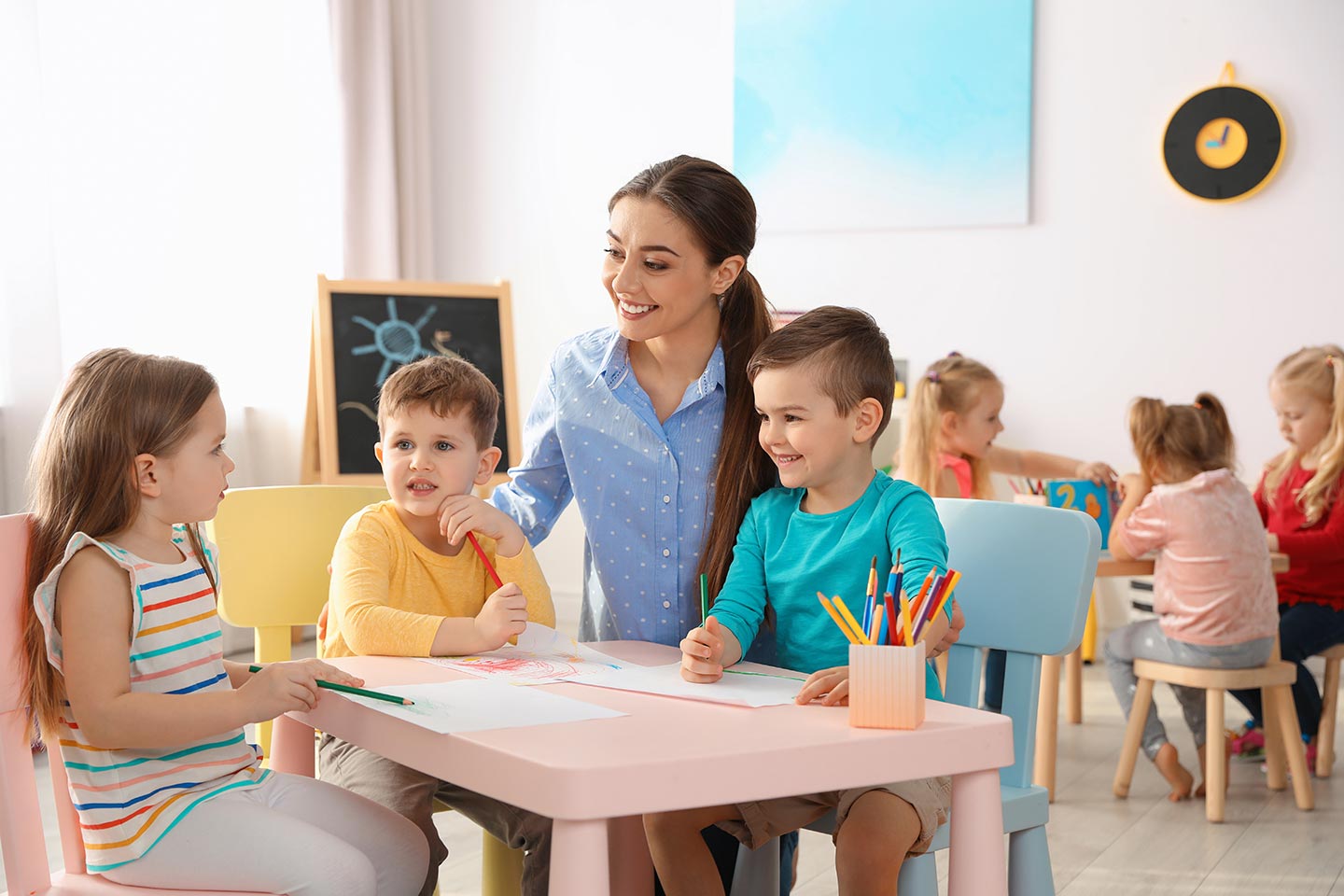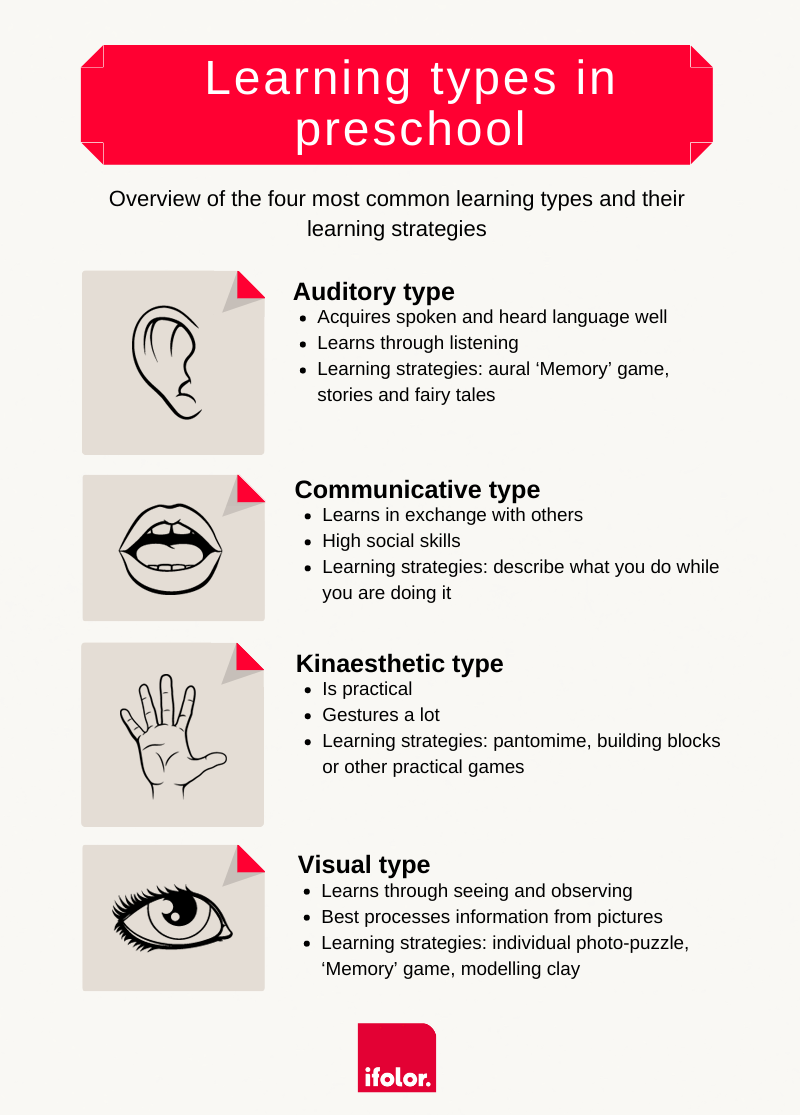
Learning types in preschool - learning tools, methods and support
From the beginning, children start to discover the world and learn on their own. They listen to their surroundings and babble away until able to speak. They crawl by themselves and practise until able to walk. Human development is twofold: in addition to this independent process, personal development also stems from external experience. The geographical, cultural and social environments are key factors influencing the developmental stages of the child. This kind of development can be targeted with specific support.
Nevertheless, problems often arise. Many children are ‘oversupported’ to the point of becoming overwhelmed. For some, the degree of support can be adequate, but inadequate for others. Experts warn against this particular scenario, as it is in this phase that the bases of social coexistence and personality development are laid down. During this time children sharpen their senses, discover feelings and re-experience their environment. The little ones also have to cope with the group. Every day in preschool children are influenced by great challenges, new adventures and experiences. That’s why excessive or the wrong type of support can be counterproductive.
To give your child optimal support in learning, we will distinguish here between the four categories or learning types: auditory, communicative, kinaesthetic, and visual. Each type has distinctive features, strengths and weaknesses. The auditory type learns best through listening and speaking. The communicative type is a great speaker, the kinaesthetic learner is a go-getter and the visual type focuses on what they see.

How do I know which learning type my child is?
How do I recognise the learning type of my child?
- Does your child know audio books by heart? Are they particularly good at memorising poems? Do they have good powers of comprehension? Then they are most likely the auditory learning type and they best process heard and spoken words.
- Does your child like to tell stories? Do they often pose well thought-out questions? Do they learn from other children? Then they belong to the communicative type. These children have a high level of social skills and start to question facts at an early stage.
- Is your child practical? Do they act without thinking? Are they guided by their feelings and follow their impulses? If the answers are yes, your child belongs primarily to the kinaesthetic learning type.
- Is your child better at processing visually appealing information? Do they easily remember shapes and figures? Do they have an eye for detail? Then they should get visual support.
As you can see, there are many indicators as to which type of learning is most appropriate for your child. Take your time to analyse them. Should the questions above not help you identify your child’s learning type, you can test their abilities and interests through play. You can try with puzzles, building blocks, audiobooks and actively talking to them, thus disclosing previously hidden skills. It is also important to know that nobody corresponds to only one single learning type and most children have multiple strengths to be supported accordingly. The four types of learning are not to be seen as hard categories and children should be adequately supported in all areas. This categorisation should definitely not bind children to a learning type, but serve as a valuable aid to their development.
How can I best support my child?
Support for the auditory type
Support for the communicative type
Support for the kinaesthetic type
Support for the visual type
The visual learning type learns primarily through seeing and observing. Information should first be communicated visually. Let your child paint pictures. Colouring pencils allow infinite imaginative possibilities. Moreover, educational puzzles lend themselves to playful memory training. In addition to the puzzles used in preschool, a good idea is to design a custom photo puzzle of grandma or the family dog. Well-known subjects promote the motivation of the little ones, which increases their receptiveness. You can, for example, let your child select designs from your photo calendar or photo books, which are then produced as a puzzle. The classic game of ‘Memory’ is also suitable for training visual perception. Another useful tool is modelling clay. Your child can independently design shapes or objects. In order to further stimulate memory, you can choose which objects your child should make. Even if this task presents a challenge at first, your child will learn quickly and successfully.
